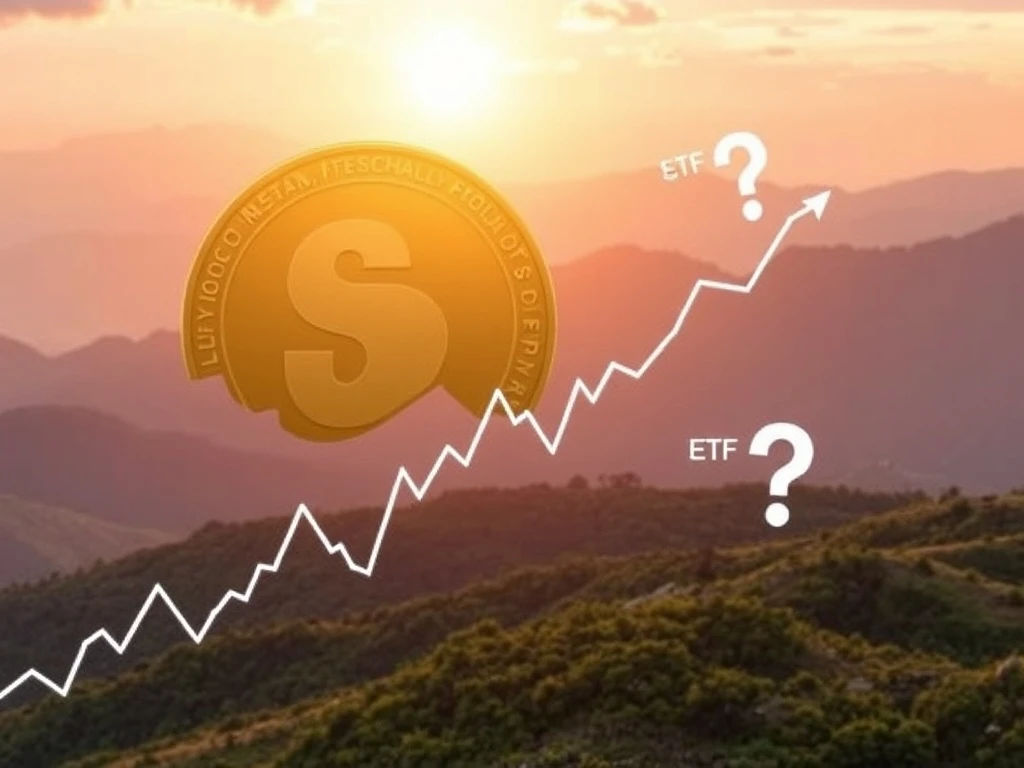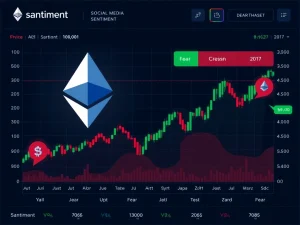SOL Price Explodes to $161 After ETF News: Will the Rally Stumble?

The cryptocurrency market is always buzzing, and recently, all eyes were on Solana. The Solana price saw a notable jump, hitting $161 following confirmation of a new exchange-traded fund (ETF) featuring staking capabilities. This development naturally sparked excitement among traders and investors, leading many to wonder if this could be the catalyst to push SOL past the $200 mark. But as with any rapid price movement in crypto, the big question is: is this rally built to last?
What Triggered the SOL Price Jump?
On a recent Monday, the Solana price increased by 7% after news broke about the upcoming launch of the first SOL ETF with staking. This particular ETF, a collaboration between REX Shares and Osprey Funds, utilizes a C-corporation structure. This approach bypasses the standard U.S. SEC approval route common for Bitcoin and Ether spot ETFs, allowing for a quicker launch. However, this structure has tax implications, taxing income at both the corporate and investor levels, unlike typical cryptocurrency ETFs.
Initial enthusiasm was high, but traders soon considered the broader implications. Similar structures could potentially be used for other altcoins, potentially diluting Solana’s unique advantage. More importantly, existing instruments like the Grayscale Solana Trust (GSOL), which has been trading for over two years, hold only about $75 million in assets. Comparing this to the $10 billion held by the Grayscale Ethereum Trust (ETHE) before the U.S. spot Ether ETF launch highlights a significant difference in institutional interest. This gap suggests that the new SOL ETF, even with staking, may not immediately attract substantial institutional capital to significantly impact the Solana price long-term.
Why Might the Rally Be Challenged?
Despite the positive Solana news surrounding the ETF, several factors could limit the rally’s sustainability:
- Staking Unlocks: A substantial amount of SOL is set to be unlocked from staking. Approximately $585 million worth of SOL could become available over the next two months, potentially adding selling pressure to the market.
- DApp Selling Pressure: Some successful decentralized applications (DApps) on Solana have been observed selling their SOL holdings. For instance, the platform Pump reportedly transferred over $404 million worth of SOL to exchanges earlier this year. This activity can counteract positive price movements.
- Network Activity & Competition: Onchain data indicates network activity hasn’t fully recovered. Despite memecoin hype, Solana’s network revenue has significantly decreased since January. Furthermore, competition from other networks, particularly Ethereum Layer-2 solutions, is increasing. Robinhood chose an Ethereum L2 for tokenized stock trading, and Coinbase partnered with Shopify for onchain payments on the Base network (an Ethereum L2), suggesting major platforms are also building elsewhere.
Looking at market indicators like the SOL futures funding rate provides further insight. Even with a recent price increase, the funding rate has remained below the neutral 10% threshold. This suggests traders are not exhibiting excessive demand for bullish leverage, which often accompanies strong, conviction-driven rallies.
Understanding the Broader Crypto ETF Landscape
The launch of various forms of crypto ETF products, including those for altcoins like Solana, reflects growing interest but also highlights differences in structure and potential impact. While U.S. spot Bitcoin and Ether ETFs gained significant traction, the REX-Osprey SOL ETF‘s unique C-corp structure and tax implications set it apart. The relatively low assets under management in existing Solana investment vehicles like GSOL temper expectations for massive institutional inflows driven solely by this new product. The evolution of the crypto ETF space is ongoing, with different structures and assets emerging, each with its own set of advantages and limitations for investors and the underlying asset’s price.
Is SOL Staking Enough to Drive Demand?
The inclusion of SOL staking rewards within the ETF structure is a notable feature, offering potential yield to investors. Staking is a core mechanism for securing the Solana network and earning rewards. However, the question remains whether this yield component, when accessed through an ETF structure with its associated fees and tax complexities (in this specific case), is attractive enough to generate significant new institutional demand compared to direct staking or other investment avenues. The market is still assessing the appeal of wrapped or structured staking products versus direct participation in SOL staking on the network.
Conclusion: A Cautious Outlook for a Sustained Rally
While the news of the SOL ETF launch provided a welcome boost to the Solana price, pushing it towards $161, the path to a sustained rally, particularly towards $200, appears challenging based on current fundamentals. Significant SOL unlocks, observed selling by DApps, muted network activity recovery, and increasing competition from other blockchain ecosystems all present headwinds. The comparison to the limited size of the Grayscale Solana Trust further suggests that institutional demand may not be as robust as seen with Bitcoin or Ether products. Investors should weigh the initial excitement against these underlying factors when considering the future trajectory of the Solana price.










